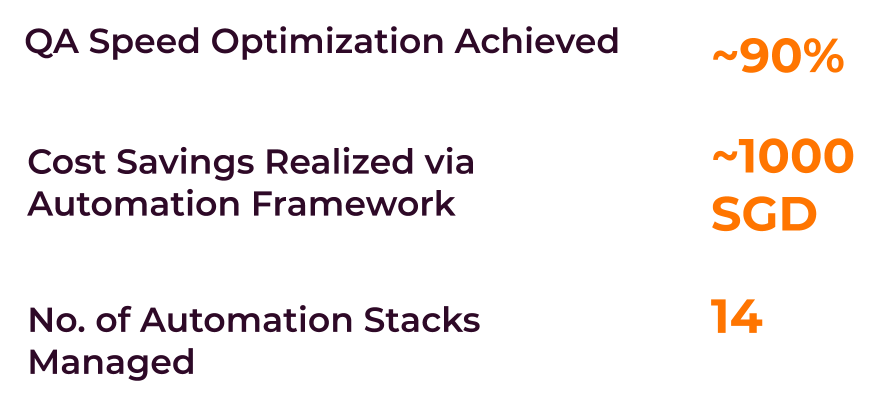The customer is a media giant company comprising more than a dozen applications where its customers face critical mobile/web applications. They had a vision of releasing features to the market more frequently and their engineering teams were in dire need of Quality Assurance automation framework, integrated with their CICD. Blazeclan helped the media giant to build robust web and mobile automation framework, which not only meets the requirements but also onboards future applications with ease.
The Need for A Robust QA Automation Framework
The development team at the customer’s end was dependent on manual efforts for testing during deployment processes. This not only impeded their release cycles but also led to bugs in production at times, owing to human errors and limitations. This additional time spent on manual testing led to longer production release cycles. When the customer’s internal team worked on building the framework on their own, numerous issues were encountered such as:
- The existing technology stack involved a complicated hybrid framework
- The script execution was sluggish attributed to the excel object repository
- Making changes to scripts for minor application enhancements was time consuming.
- The logic implemented for multiple scripts was inappropriate for the coverage
- The script management and logic management for both web and mobile was a complex process
- The elastic search leveraged for reporting was unaffordable.
The Solution
Blazeclan proposed the customer a solution that involved building a robust QA automation framework. This framework will not only meet the needs of the customer but also enable them in onboarding the future applications with ease and enough agility to adapt to changes in the web or mobile applications.
After in-depth analysis, the reason that was identified for the sluggishness was the excel object repository. To stave off the challenge, we helped the customer by implementing the Page object model to remove the sluggishness of excel object repository. The Selenium tool was used for automating QA of web application and the Browserstack was used for mobile automation, as part of the implemented solution. These systems simulated physical devices. Also, they helped the customer quickly test their application on a wide range of browsers and mobile systems, thereby saving time and money.
The feasibility of selecting preferred geolocation on Browserstack for testing made it possible for the customer to test the performance and functionalities of applications in a specific region. All the native mobile applications have been covered as part of the solution. The tool Appium was used to interact with mobile devices to run the queries, which enabled enhancing the complete automation of the development cycle. After working on QA automation of Android and Web applications of the customer, we moved ahead with implementing the same for their IOs applications.
Benefits Achieved by the Customer
- The Page Object Model refined and reduced the complexities in the customer existing technology stack. This further made it easy to maintain the repository. This further helped the customer save time in performing QA activities.
- The use of Maven enabled the customer to maintain dependencies and build management. Appropriate logic was implemented for the whole coverage.
- The cost involved in reporting was completely reduced with the use of an Extent report.
- The global consolidated QA Automation Dashboard has been implemented for multiple applications, thereby removing the sluggishness in the process. It also helped the customer in getting a one-page view of the status of various automation stacks.

Tech Stack
| Selenium | Apium | Browserstack |
| Jenkins | Amazon S3 |



















